#Organic Lentils
Explore tagged Tumblr posts
Text

#Organic Lentils#Organic Lentils Exporter#Lentils Exporter#Organic Lentils in India#Organic Lentils Price#Organic Lentils Supplier#Organic Lentils Pulses#Protein-rich Lentils#Organic Lentils in Haryana#Exporter#India
0 notes
Text






























#TastyBiteOrganic#TastyBiteOrganicOriginalMadrasLentilsRice#MicrowaveableFlavoredSaucedRiceReview
I tried the Tasty Bite Organic Original Madras Lentils Rice and it was okay.
This tasted like original madras lentils sauced rice had a light well seasoned bean chili like smell and flavor that wasn't salty.
This original madras lentils sauced rice did taste healthy with a soft and lightly chewy in texture from the rice with the red beans.
The original madras lentils sauced rice didn't taste salty which is nice and went well with a meat dish.
I would eat this again.
Mine weighed 297g.
Got at Kroger.
#Tasty Bite Organic#Tasty Bite Organic Original Madras Lentils Rice#Microwaveable Flavored Sauced Rice Review
0 notes
Text
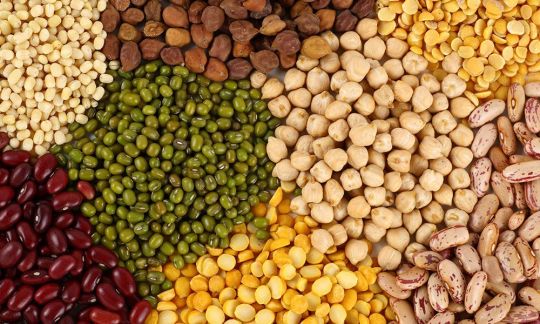
#Natural Pulses#Organic Pulses#Pulses#supplier#Exporter#Maharashtra#India#Mumbai#Chickpeas (Garbanzo Beans)#Lentils (Red#Green#Black)#Kidney Beans#Black-eyed Peas#Pulses export#India export data of Pulses
0 notes
Text
‼️Please Read. After a discussion with my Cousin we decided to start up a pilot Soup kitchen in Al Hitana Omdurman serving lentil stew fortified with peanut butter to double the available calories in the stew as well as bread.
The kitchen has been running for 3 days now and has served on average 80 people a day, representing 80 households so potentially we’ve been helping 400 people a day.
Over 90% of those who have shown up to the kitchen over the past 3 days have been women and Children and for some it will be the only meal they get that day.
From tomorrow we’d like to scale up to making two 65 litre pots of stew a day which is 160 servings (households).
Currently we’ve purchased enough supplies to run the kitchen at full capacity for two weeks but we’d like to make this a permanent thing and that needs external support.
If you would like to support this project and help this kitchen to continue working, then please donate to this gofundme which will be providing the funding support
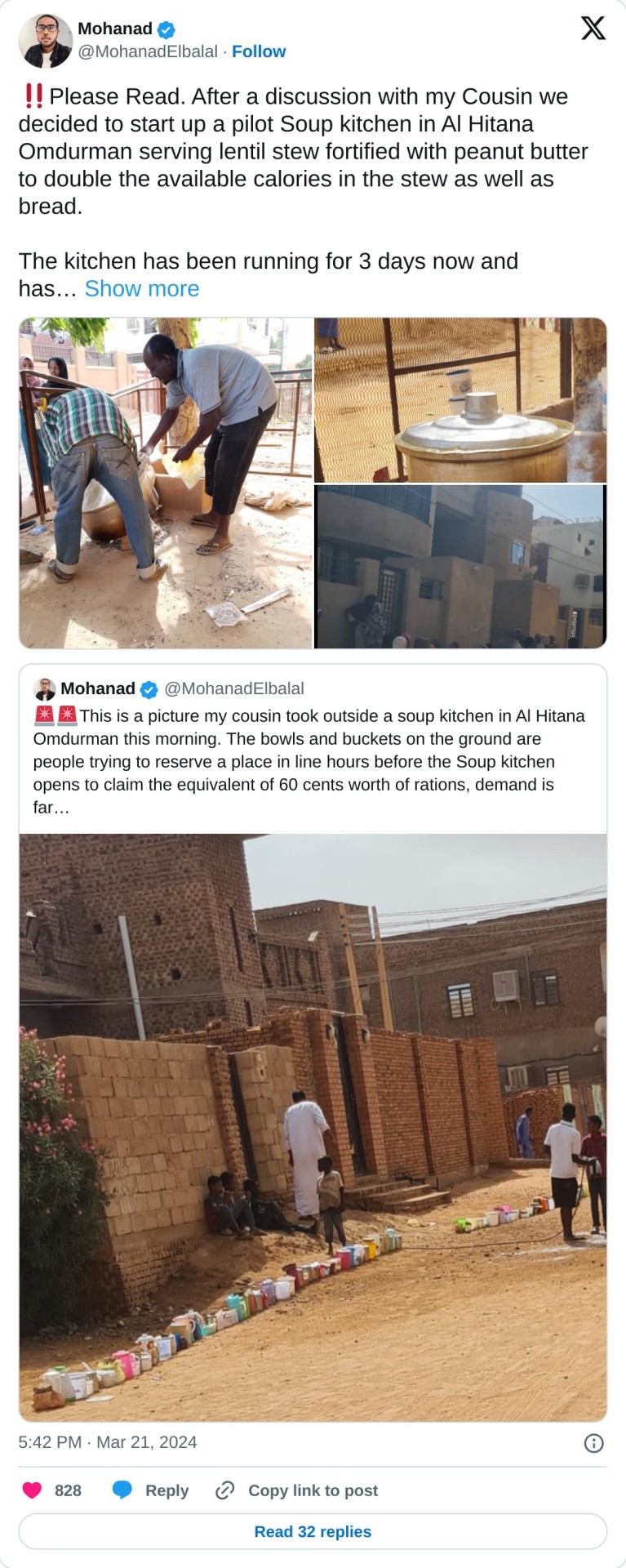
11K notes
·
View notes
Text
https://ebazaar.rajasthan.gov.in/plc?seller=10018
Shop Online at Rajasthan Government eBazaar - Best Deals & Quality Products
Explore a wide range of products at Rajasthan Government eBazaar. Enjoy the convenience of online shopping with secure payment options. Find the best deals, quality products, and trusted sellers. Start shopping now!
#rajasthanemporiumonline#Rajasthanonlineshopping#OnlineStationeryStore#onlinegroceryshopping#buygrocery#glutenfreeproductsonline#korescleargluestick#online grocery shopping#kesar chandan sharbat#sabarmati neem soap#organic masala#lentils variety
0 notes
Text
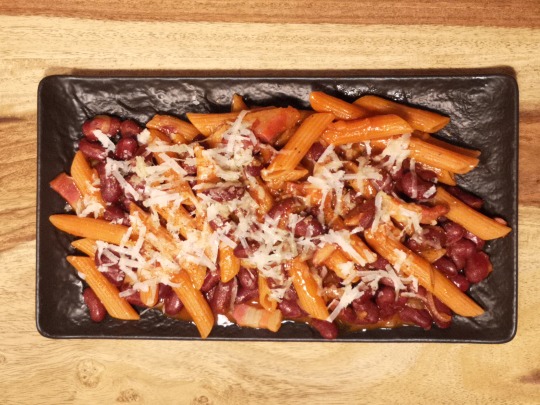
Für diese schnelle und einfache Pasta mit Bohnen braucht man nur wenige Zutaten und 10 Minuten!
Penne (oder Fusilli) aus roten Linsen 65-80 g
Kidneybohnen im Glas ½
Tomatenmark 2 Esslöffel
Bauchspeck 30 g
Schalotten 2 kleine
Natives Olivenöl extra
Feines Salz nach Geschmack
Schwarzer Pfeffer nach Belieben
Wasser in einem kleinen Topf zum Kochen bringen, salzen und die Nudeln mit den roten Linsen hinzufügen, sobald das Wasser kocht. Die Nudeln brauchen zwischen 5 und 7 Minuten, um zu kochen.
Das Öl in einem Topf erhitzen und die beiden in dünne Scheiben geschnittenen Schalotten hinzufügen. Etwa 3 Minuten braten, dann die Speckstreifen dazugeben und weitere zwei Minuten braten.
Die Hälfte der Bohnen aus dem Glas hinzugeben und ein paar Minuten kochen lassen. Das Tomatenmark hinzugeben, die Hitze reduzieren und mit Salz und Pfeffer würzen.
Von Zeit zu Zeit etwas Kochwasser von den Nudeln dazugießen.
Wenn die Nudeln 5-6 Minuten gekocht haben, abgießen und zu den Bohnen geben, dabei mit einem Holzlöffel umrühren. Wenn nötig, noch etwas Kochwasser (1-2 Esslöffel) hinzufügen.
Eine weitere Minute kochen lassen und die Hitze je nach gewünschter Cremigkeit der Sauce abstellen.
Vor dem Servieren mit schwarzem Pfeffer, geriebenem Parmesankäse und etwas nativem Olivenöl extra bestreuen.
Dies ist eine sehr vereinfachte Version der traditionellen Pasta e Fagioli, aber sehr lecker und schnell zubereitet.
#organic food#food#italian food#pastalover#penne pasta#gluten free#organic#lentilspasta#red lentils#kidney beans
1 note
·
View note
Text
We must organize a general strike. We must hit the oligarchs in their pocket.
Elon Musk cannot buy elections if he's no longer the richest man, and he just recently sent an email to the staff at X, confessing they were barely making ends meet.
We need to take away their money. Stop shopping Amazon, Target and all of them WHILE ALSO not turning up to work.
We must remind them that they need us. Not the other way around. That's why Luigi scared them.
But a lot of you white folk are so individualistic that you will always seek the most convenient. If you think I'm lying, go take a ride through some grocery haul videos on TikTok. Those hauls are loaded with convenient foods.
We are going to deal with food shortages.
Food prices are going to rise. Food stores will be depleted.
Agricultural crops are not being picked because the agricultural workers are afraid of being deported. Food will rot on vines.
These folks do not know how to make their food bills stretch. Like adding lentils to ground beef. I rarely see any of them buying bags of beans or rice, but they will dozens of Ramen noodle packages.
You can feed more people with a simple bag of rice and a bag of beans than you can with an 8 pack of microwavable breakfast sandwiches.
Do you know the reason for the Irish Famine?
It's not like there wasn't fish in lakes or rivers. It's not like there weren't other crops to eat. It was that the English landlords refused to feed them because they made their money exporting the food!
My folk know how to feed each other.
It's y'all that don't know how to exist in community.
#ask auntie#ask me anything#black girl magic#billionare oligarch#oligarchs#oligarchy#general strike#labor#trade unions#elon musk#donald trump#luigi mangione#fuck ceos#ceo shooting
187 notes
·
View notes
Text
Foods You Can Eat Instead of Taking Vitamins and Supplements 🍎🥥🥦🥑🍌
Vitamin A: Carrots, sweet potatoes, spinach, kale.
B Vitamins: Whole grains, meat, eggs, nuts, legumes.
Vitamin B1 (Thiamine): Whole grains, legumes, nuts, pork, fortified cereals.
Vitamin B2 (Riboflavin): Dairy products, lean meats, almonds, leafy greens. Vitamin B3 (Niacin): Poultry, fish, nuts, legumes, whole grains.
Vitamin B5 (Pantothenic Acid): Meat, poultry, eggs, avocado, whole grains.
B6: Chicken, turkey, fish, bananas, chickpeas.
Folate (Vitamin B9): Leafy greens, legumes, citrus fruits, fortified grains.
Vitamin B12: Animal products (meat, fish, dairy), fortified plant-based foods.
Vitamin C: Citrus fruits, strawberries, bell peppers.
Vitamin D: Fatty fish (salmon, mackerel), fortified dairy products, sunlight.
Vitamin E: Sunflower seeds, almonds, vegetable oils, nuts, spinach, broccoli.
Vitamin F (Essential Fatty Acids): Fatty fish, flaxseeds, chia seeds, walnuts.
Vitamin H (Biotin): Eggs, nuts, sweet potatoes, salmon, avocado.
Vitamin K: Leafy greens (kale, spinach), broccoli, Brussels sprouts.
Vitamin K2: Fermented foods (natto, cheese), animal products, leafy greens.
Vitamin L1 (Anthranilic Acid): Cruciferous vegetables (cabbage, cauliflower), legumes.
Vitamin P (Bioflavonoids): Citrus fruits, berries, onions, green tea.
Vitamin Q (Ubiquinone): Fatty fish, organ meats, spinach, cauliflower.
Vitamin T (L-carnitine): Red meat, poultry, fish, dairy products.
Vitamin U (S-Methylmethionine): Cabbage, broccoli, Brussels sprouts.
Betaine: Beets, spinach, whole grains, seafood.
Boron: Fruits (apples, pears), legumes, nuts, avocado.
Calcium: Dairy products, leafy greens (kale, collard greens), almonds.
Carnosine: Beef, poultry, fish.
Carnitine: Red meat, dairy products, fish.
Catechins: Green tea, black tea, dark chocolate.
Choline: Eggs, liver, beef, broccoli, soybeans.
Creatine: Red meat, fish, poultry.
Chromium: Broccoli, whole grains, nuts, brewer's yeast.
Chondroitin: Cartilage-rich foods (bone broth, connective tissue of meat).
Copper: Shellfish, nuts, seeds, organ meats, lentils.
Coenzyme Q10 (CoQ10): Fatty fish, organ meats, nuts, soybean oil.
Ellagic Acid: Berries (strawberries, raspberries), pomegranates.
Glucosinolates: Cruciferous vegetables (cabbage, broccoli, cauliflower).
Glucosamine: Shellfish (shrimp, crab), bone broth, animal connective tissues.
Glutamine: Dairy products, meat, poultry, cabbage.
Inositol: Citrus fruits, beans, nuts, whole grains.
Iodine: Seafood, iodized salt, dairy products.
Iron: Red meat, poultry, beans, lentils, spinach.
L-Theanine: Mushrooms, black tea, white tea, guayusa.
Lignans: Flaxseeds, whole grains, cruciferous vegetables.
Lutein and Zeaxanthin: Leafy greens (spinach, kale), corn, eggs.
Lycopene: Tomatoes, watermelon, pink grapefruit.
Magnesium: Spinach, nuts, seeds, whole grains, beans.
Manganese: Nuts, seeds, whole grains, leafy greens, tea.
Melatonin: Cherries, grapes, tomatoes.
Omega-3 fatty acids: Flaxseeds, chia seeds, walnuts, fatty fish.
PABA (Para-Aminobenzoic Acid): Whole grains, eggs, organ meats.
Pantothenic Acid (Vitamin B5): Meat, poultry, fish, whole grains, avocado
Pectin: Apples, citrus fruits, berries, pears.
Phosphorus: Dairy products, meat, poultry, fish, nuts.
Prebiotics: Garlic, onions, leeks, asparagus, bananas (unripe), oats, apples, barley, flaxseeds, seaweed.
Probiotics: Yogurt, kefir, fermented foods (sauerkraut, kimchi).
Potassium: Bananas, oranges, potatoes, spinach, yogurt.
Polyphenols: Berries, dark chocolate, red wine, tea.
Quercetin: Apples, onions, berries, citrus fruits.
Resveratrol: Red grapes, red wine, berries, peanuts.
Rutin: Buckwheat, citrus fruits, figs, apples.
Selenium: Brazil nuts, seafood, poultry, eggs.
Silica: Whole grains, oats, brown rice, leafy greens.
Sulforaphane: Cruciferous vegetables (broccoli, Brussels sprouts), cabbage.
Taurine: Meat, seafood, dairy products.
Theanine: Green tea, black tea, certain mushrooms.
Tyrosine: Meat, fish, dairy products, nuts, seeds.
Vanadium: Mushrooms, shellfish, dill, parsley, black pepper.
Zeatin: Whole grains, legumes, nuts, seeds.
Zinc: Oysters, beef, poultry, beans, nuts, whole grains.
#women health#health and wellness#healthy diet#healthy living#healthy lifestyle#womens health#health#health tips#wellness#levelupjourney#dream girl guide#dream girl tips#dream girl journey#health is wealth#clean girl aesthetic#clean girl#it girl#nutrition#supplements#organic#food#nutrients#healthyhabits#healthy life tips#self love journey#self love#dream life#dream girl
2K notes
·
View notes
Note
Question about Cycle Syncing. Do you know where i can find, like a masterlist of food that fits into the steps of the cycle? I always see the same food but how abt the rest? Would be nice to know for example for meal building.
MASTERLIST: NUTRITION CYCLE SYNCING

This post is a masterlist of everything that is recommended you eat while cycle syncing. if you don’t know what that is, read this beginner guide.
This post is a researched post, because I actually couldn’t find a proper masterlist. So, I researched what kinds of nutrients you need during your 4 phases, but I am NO DOCTOR. Just a little disclaimer!
MENSTRUAL/FOLLICULAR PHASE - high iron, vitamin C foods
VEGETABLES
Spinach
Silver beet
Broccoli
String beans
Peas
Sweet potatoes
Beet greens
Dandelion greens
Collards
Chard
Chilli peppers
Sweet yellow peppers
Parsley
Brussel sprouts
FRUITS
Oranges
Guavas
Black currants
Cantaloupe
Kiwis
Lemons
Lychees
Papayas
Strawberries
Oranges
Watermelon
Figs
Prunes
PROTEINS
Beef
Lamb
Liverwurst
Pork
Veal
Dried beef
Eggs
Shrimp
Clams
Tuna
Sardines
CARBS/OTHER
Whole wheat bread
Enriched pasta
Rye bread
Enriched rice
Tofu
Beans
Lentils
OVULATORY PHASE – complex carbs, lean proteins, anti-inflammatory, vitamin B6, folate/choline
VEGETABLES
Carrots
Spinach
Sweet potato
Red potato
Green peas
Chickpeas
Butternut squash
Asparagus
Turnip greens
Romaine lettuce
Beets
Sweet corn
Mushrooms
Pumpkin
Parsnip
Cauliflower
FRUITS
Bananas
Avocado
Mango
Blueberries
Apple
Peaches
Tangerine
Pink grapefruit
lemons
PROTEINS
Egg whites
Strained yoghurt
Skinless white meat poultry
Plain greek yoghurt
Low fat cottage cheese
Tofu
Lean beef
Powdered peanut butter
Beef liver
Pork loin
Bison
Organ meat
CARBS/OTHER
Lentils
Kidney beans
Green peas
Walnuts
Flaxseeds
Cashews
Almonds
Pistachios
LUTEAL PHASE – High fibre, vitamin B12, magnesium
VEGETABLES
Spinach
Swiss chard
Collard greens
Green peas
Sweet corn
Cabbage
Arugula
Bok choy
Celery
Lettuce
FRUITS
Pears
Strawberries
Avocado
Apples
Raspberries
Blackberries
Blueberries
Bananas
PROTEINS
Animal liver
Animal kidney
Clams
Swiss cheese
Turkey
Crabs
Ham
CARBS/OTHER
Oats
Popcorn
Almonds
Fresh coconut
Sunflower seeds
Dark chocolate
Wheat
barley
#menstrual cycle#women’s cycle#cycle syncing#women’s health#health#self healing#clean girl#green juice girl#cleaneating#healthy eating#healthy girl#glow up#glow up era#nutrition#healthy diet#meal prep#meal plan#anonnie#ask
530 notes
·
View notes
Text
Happy Ghouls and Gangs DPxDC Bang event posting week!! Here's what I've been working on for the @dpxdcbigbang 🥰
Summary:
It’s a normal day for Alfred Pennyworth. He spends it taking care of the manor and watching over its inhabitants, just as he does every other day. It’s an exhausting, never-ending task, that he wouldn’t change for the world. But that night, he is confronted by a stranger in his rooms with a copy of every single soul-binding contract he’s signed for the protection of his family. The new Ghost King wants to update his terms and conditions.
Alfred POV, Ghost King Danny, with some Post-Vivisection goodness and only a little (a lot) of blood and gore and medical fun, but that's for later. Not for the squeamish, please check the tags!!
Snippet under the cut!
It’s a normal day for Alfred Pennyworth.
He wakes up early enough to be ready to greet Master Duke with breakfast when he shambles into the kitchen, he cleans, he greets the rest of the manor’s residents when they finally make it downstairs, he cleans, he goes down to the cave to rouse Master Tim from another sleepless night, he cleans.
It’s a quiet day, or as much as one can be when the place he calls home is filled with vigilantes.
He drops off Masters Damian, Tim, and Duke at school and uses the rest of the trip to pick up some groceries for dinner. Coq au vin tonight, he thinks, it’ll be perfect for the changing of the seasons. A mushroom and lentil substitute for Master Damian will do lovely.
The rest of the day is spent preparing the meal and doing a spot of gardening before it’s time for the school run again. He can’t help but smile fondly as he listens to them needle and tease each other, only stepping in when it starts to become too pointed.
Yes, it’s a normal day for Alfred Pennyworth. It’s at night when it all changes.
There’s a ghost waiting for him in his room.
A soft glow emanates from the creature’s vaguely transparent body and a crisp frost creeps slowly across the floor, sparkling in the darkness like diamonds.
“Mr. Pennyworth?” it says, the voice bouncing off the walls so that it sounds like hundreds of beings instead of one.
Fear squeezes at his heart and the air in the room turns dark and heavy, so that Alfred struggles to breathe. His mouth is dry, his head is swimming, and he’s not entirely sure if he’s going to survive the night.
#dpxdc#dpxdcbang2024#ghost king danny#dpxdc crossover#dcxdp#there's also birthday celebrations and party games and presents!!!#and a clown!#(spoilers)#please enjoy!!! this has been in the works since like idk march or something and it was incredibly fun to write#with everyone - to be part of a bang for the first time#and HOLY SHIT YOU GUYS THE ART????#you are not prepared for the art to come#i'm keeping the artists a surprise for now but MY DUDES you are NOT PREPARED#because i certainly wasn't#oml they are so good holy shit wow#cannot oversell it enough#i'm super excited for all of it#genuinely really happy and also bricking myself at the same time#weirdly very anxious about this - moreso than normal posting at least#THANK YOU TO EVERYONE#the mods and the writers and the artists#you've all been wonderful#HAPPY BANG POSTING WEEK#AHAHAHHHHHHHH#i'm going to bed wherein which i will be too excited to sleep and i will simply roll around all night squirming haha#good night!
139 notes
·
View notes
Text
#Organic Lentils#Organic Lentils Exporter#Lentils Exporter#Organic Lentils in India#Organic Lentils Price#Organic Lentils Supplier#Organic Lentils Pulses#Protein-rich Lentils#Organic Lentils in Haryana#Exporter#India
0 notes
Text
Fallen Empires - Chapter 4

Pairing: Geta x OFC
Summary: Having done the unthinkable to secure his throne, Emperor Geta rules with ruthlessness and paranoia. Now, after escaping an assassination attempt, a badly injured Geta is saved by Daphne, a young widow, who takes him back to her remote village without knowing his true identity. As Daphne nurses the former emperor back to health, attraction blooms between them, and Geta discovers a soft side he didn't know he possessed. But can their love survive his thirst for revenge and his desire to reclaim power?
Chapter warnings: none
Chapter word count: 2.5k
Prologue + Chapter 1 - Chapter 2 - Chapter 3
Chapter 4
At last, Geta was deemed sufficiently recovered to leave the bedroom. His stitches came off, and though Daphne still plied him with bitter drinks and fortifying broths, she no longer put the smelly poultices on his wounds. She hadn't allowed him a full bath yet, but she had given him his privacy to wash and dress and had allowed him solid food. It was only simple fare like lentil stew and barley soup, but it tasted heavenly after a month of watery gruel. His illness must have changed his palate as well, for now he thought of the roast flamingos and lark's tongues and dormice of a Roman feast with disgust. Had he really eaten such things? This food was so much more nourishing and wholesome.
When he asked Daphne if the villagers would be suspicious that she was taking more food than usual, she only shrugged. "They always give me more than I need," she explained. "Usually I would store it and share it in the winter, but nobody will miss it."
Geta thought he would be glad to finally get back on his feet. But his month-long convalescence had left him weak and shaky, and when he looked at his reflection in the basin of water during his morning ablutions, he no longer recognized his own face. It was pale, as pale as it had been back in Rome, when he had been younger and had resorted to powder and rouge to make himself stand out. His cheeks and eyes had sunken, while his hair and beard had grown long, giving him a haggard look. Even his body had changed. When Daphne cut his stitches, he didn't dare look at himself. All the muscles, honed from hours at the gymnasium in Rome and days of marching on the road alongside his men, had vanished, leaving only protruding ribs and collarbones. It frightened him more than he cared to admit. How strange it was that when he was bedridden, all he could think of was to get better, to ride out and confront those who wanted him dead, yet now, when he was better, fear and doubt started to creep in. He could not face his enemies, whoever they were, in this frail and weakened condition.
The first thing he did, once he could walk around unassisted, was go outside to get a feel of the land. Daphne told him that the village—more like a hamlet, really—had been built by Greek shepherds hundreds of years ago, who had discovered some, if not fertile then at least peaceful, grazing land hidden amongst these formidable rocky peaks. Remembering the history lessons from his childhood, Geta guessed that it was the leftover of an old Greek settlement after Pompey remade the East, or perhaps its inhabitants were fleeing the collapse of the Seleucid Empire. Either way, it explained the strange accent and why the people here still considered themselves Greek, though they mixed and traded with the Syrians down in the Balikh Valley as well as the Kurd nomads of the plateau and the Parthians across the border. But Geta was less interested in the history of the place than in its capacity for secrecy and defense.
"Don't go too far, mind," Daphne said, as he stepped through the door.
Ignoring her, Geta stood at the door for a moment, looking around. The hut was situated on the summit of a tall, rocky hill, sheltered from the blistering sun by a sheer cliff in the back and by Daphne's namesake, a grove of laurel trees, around the sides. The front door opened into a little yard and overlooked yet more rocky hills surrounding the hut. No wonder he couldn't be found. The hills all looked the same, sandy brown crags that stood like sentinels, dotted here and there by clumps of scraggly pines. There were no signs of other inhabitants, save for the bleats of distant sheep, and no visible roads, save for a tiny footpath winding between two large boulders that led from the front door of the hut down the hill and into the valley.
Geta followed this path, stopping every minute to catch his breath. On his left, the path opened into a crevice amongst the rocks, where terraced garden rows lined the hill. Fruit trees, vegetables, and medicinal herbs grew valiantly despite the arid soil. Beehives stood between the trees, and occasionally a bee would buzz past him, bustling just like its mistress. Below the garden, a small cistern had been dug into the rocks to gather the meager rainfall.
The path continued its downward spiral around the hill. Here and there amongst the boulders, the scouring wind had driven in enough soil for shrubs and even trees to grow, and they clung to the rocks as tenaciously as the people of this place clung to their land. Through the boulders, Geta could catch glimpses of the valley below, a deep gorge with a stream of brown sludge meandering through it. Sounds of habitation drifted toward him—more sheep bleating, the rhythmic hammering of a blacksmith, a child's wail—but he saw no other soul on his descent.
Eventually, the path dwindled into little more than a crack between two rock faces, just wide enough for a man leading a donkey—not a horse—to pass through. A cleft in the rock served as a gate between the path and the valley beyond. Dangling from a hook over this cleft was the bell he'd heard, which was just a weathered piece of bronze with an iron rod next to it for sounding the alarm. Geta looked behind him. The hut was still visible, though only just, its mud-brick walls blending in with the hillside so perfectly that one couldn't even tell there was a dwelling there, unless one already knew where to look. It was the ideal hiding place.
Thus reassured, he made his way back up the slope. But he had been overconfident in his recovery, and the climb was much more difficult than the descent. He lost sight of the hut and was no longer sure if he was going the right way. Well, how hard could it be? He just had to go up, didn't he? But new boulders seemed to be shooting up in random places, blocking his way, forcing him to go left or right instead of in a straight line, and he didn't seem to be gaining ground at all. Soon he was crawling on his hands and knees, wheezing as though his lungs were about to burst. Sweat poured down his forehead and his back.
Just when he thought he would never make it back to the hut, hurried footsteps came toward him, and Daphne's capable hands helped him up. "Don't disappear like that," she chided. "You gave me such a fright. I thought you'd run away!"
"Only—wanted to—take—a walk," he tried to explain.
"You must take it easy," she said, helping him down a chair by the door of the hut. "Here. Rest. I'll bring you some wine."
She went inside. A moment later, Geta heard a small gasp and a clatter. He turned around to find Daphne scrambling to pick up a cup, which had fallen on the floor.
"Sorry, so clumsy of me," she stammered.
"Something the matter?" he asked.
"Nothing's the matter, everything is fine," she said, a little too quickly. She busied herself with the wine, mixing it with water before pouring a cup and handing it to him. It could be his imagination, but he thought her face was rather flushed, and she was avoiding his eyes. Geta's suspicion, which had been lying dormant since the night he'd witnessed Daphne save the pregnant woman, reared its head again.
"What's in this wine?" he asked, eyeing the cup.
Daphne saw his suspicious look. "Are you still on about that?" she said, rolling her eyes. "I've told you, I would not go to all this trouble only to poison you. Here"—she snatched the cup from him and took a large sip—"does that make you feel safer?"
Sheepishly, Geta took the wine back. Daphne was still glancing at him strangely from time to time, but he shrugged it off and focused on the more pressing matter, which was his recovery. "How long do you think before I'm strong enough to return to Edessa?" he asked.
"I don't know," she said. "You're strong, but you've lost a lot of blood, and your lungs are still in danger of getting inflamed. There's a town two days from here, Adala. There you may be able to get passage to Edessa, but if your fever returns while you're on the road, there's nothing I can do."
His stomach sank. He took a sip of wine and told himself to be patient. The gods had given him this second chance at life to strike down his foes, and he would not squander it.
Trying to discover his enemies got him nowhere, and so Geta turned to the one thing he knew—brute strength. Lacking a gymnasium, he exercised by walking and sparring with a stick against a tree trunk, and sometimes with the dagger as well. It was true that his resting time in between these exercises was often longer than the exercises themselves, but at least exercising had the virtue of tiring him out, so his sleep was longer and more restful, untroubled by ghosts and visions of Tartarus.
When Daphne went into the village, she still instructed him to stay in the bedroom as usual. The occasional villager would stop by to pick up a cure or leave their token of gratitude, and soon Geta learned their names and professions. There was Tatia the baker, who always wanted a cure for indigestion for her husband; Cyrus the weaver, an old man whose back was hunched from bending over the loom, who usually picked up a balm or ointment for his aching joints; Habib, who came by often for some fortifying tonics for his wife. There were also Khaleed the shepherd, Musa the shepherd, Apollonius the shepherd, Samira the shepherd's wife, and many others, as well as various children. They all had the same lean, sinewy look as Daphne's, the look of a people who had to scratch out a living on a near-barren land and conserve every drop of water they could find. Still, they looked harmless enough. It made Geta feel a little safer, though he still wore the dagger during the day and slept with it under his pillow.
If Daphne was home, he could walk around freely. She even put a bench in a corner of the hut, near the door, so he could sit down and rest whenever he wanted. Sitting there, he would amuse himself by watching the goats—a nanny goat, and her two kids—frolicking around, foraging for grass and edible leaves amongst the rocks, while the donkey stood placidly under the olive trees. He would watch Daphne as well, and now that he was getting better, her bustle and chatter no longer irritated him as they once had. If anything, he found them rather endearing, a welcoming distraction from his circuitous, muddled thoughts.
One afternoon, Geta was napping on this bench when he was awakened by annoyed bleating. Getting up, he saw Daphne just outside the door, holding one of the baby goats, the black one with a rather cheeky look, between her knees. She was struggling to wrap strips of old linen around the goat's budding horns, and the goat was having none of it. His brother, the snow-white one, was lying primly nearby, his horns already wrapped.
"What on Earth are you doing?" Geta asked.
"What does it look like I'm doing?" she said between two breaths. "I'm wrapping his horns." Taking advantage of her distraction, the goat bolted out of her lap. "Catch him!" Daphne shouted, running after the goat. It dodged between her arms and ran straight for the open door of the hut, toward the bench. Geta stuck out a leg. The goat tried to jump over him, but its own legs were still young and clumsy, and it went sprawling on the ground.
Chuckling, Geta scooped the goat up. Its fur was surprisingly soft, and it smelled, not unpleasantly, of dung, fresh grass, and warm milk. Once it realized escape was out of the question, it settled into his arms readily enough and immediately started chewing on the sleeve of his tunic, as was the wont of goats.
"Hold him like that," Daphne said.
Picking up the linen, she knelt in front of Geta and wrapped the goat's horns in quick, practiced movements. A new scent, faint but sweet, almost like orange blossoms, joined the animal smell of the goat. It took a moment for Geta to realize it was coming from Daphne. He had never noticed it before, even when she sat close to him to change his dressing, either because he had been too ill to notice anything, or because the strong vinegary smell of the dressing had overpowered it. He breathed in deeply, letting that fresh and flowery fragrance fill his tired lungs. His inhale causes Daphne to look up. Their eyes met, and Daphne's lashes—which were quite long, he'd only just noticed as well—fluttered for the briefest of moments, before she looked away.
"Why do you wrap their horns?" Geta asked, to fill the silence.
"So they don't hurt themselves or each other."
"They don't seem to like it," he pointed out.
"Too bad." She finished tying the ends of the linen strip. Geta let the goat go, and it ran back to its mother and brother. "Be good to each other now, you hear?" Daphne called after them.
A ghost whispered at the back of Geta's mind. Be good to each other. Those were his father's last words to him and his brother. It hadn't worked. It never would've worked. His father must have known that, and yet he had clung to that hope of the Empire under two rulers, until the day he died.
"It's no use," he said to Daphne, trying to keep the bitterness out of his voice. "Look, they're at each other's throat again already." Indeed, the two kids were running toward each other at full tilt, though their linen-wrapped horns glanced off harmlessly.
Daphne shrugged. "At least this way they won't get hurt," she said.
"Would you have soldiers fight with blunt swords then?" he scoffed. "Would you wrap them up in soft linen instead of armor, so they wouldn't get hurt? It's in their nature. You can't stop it."
Daphne looked at him curiously, and he realized he'd said too much. She studied him for a long time. Eventually, she replied, quietly, "I would, if I could." There was an infinite sadness in her eyes and her voice that he couldn't understand, and as he watched her go into the garden to gather vegetables for their evening meal, guilt pricked at his insides like tiny needles. He didn't know if he was feeling guilty about making her sad, or if it was simply his old guilt coming back to haunt him.
Chapter 5

I got the idea for Daphne to wrap the goats' horns from this delightful image of aggressive goats having to wear pool noodles to prevent them from injuring themselves and others. Knowing Daphne, she would no doubt come up with the Ancient Roman equivalent of that.
Septimius Severus's last words to his sons are (paraphrased) "Be good to each other, enrich the army, and scorn all the rest." Unfortunately, it seems Caracalla and Geta only paid attention to the last bit :((
This chapter is a bit shorter than usual, so the next update may come sooner. Stay tuned!
Taglist: @sheneedsrocknroll92, @justnobodynothingmore, @barcelonaloverf1life, @myotakureprieve, @flawssy-227 (if you want to be tagged, let me know!)
#joseph quinn#joseph quinn fic#gladiator 2#emperor geta#gladiator 2 fic#emperor geta fic#geta#emperor geta x ofc#geta x ofc
62 notes
·
View notes
Text
Since I'm vegan, incorporating elements of a canine ancestral diet into my lifestyle will be more about emulating the nutritional balance rather than the exact foods wolves consume. Wolves eat a mix of proteins, fats, and plant matter, with an emphasis on whole, nutrient-dense sources. Their diet is built for survival, strength, and endurance—qualities I can mirror through plant-based foods while maintaining my values.
### **Key Elements of a Wolf's Diet & Vegan Alternatives**
#### **1. High-Protein Intake**
Wolves thrive on a protein-rich diet, which fuels their muscles and sustains their energy for long periods. You can incorporate:
- **Legumes & Pulses** – Lentils, chickpeas, black beans, and split peas
- **Soy-based Proteins** – Tofu, tempeh, and edamame
- **Seitan (Vital Wheat Gluten)** – A high-protein, meat-like option
- **Hemp & Chia Seeds** – Packed with complete proteins
- **Nutritional Yeast** – Adds protein and a cheesy flavor to dishes
#### **2. Balanced Fats for Energy & Brain Function**
Wolves get essential fatty acids from prey, but you can substitute with plant-based sources:
- **Omega-3s** – Flaxseeds, walnuts, algae-based supplements, hemp seeds
- **Healthy Fats** – Avocados, olives, coconut, and nuts
- **Medium-Chain Triglycerides (MCTs)** – Found in coconut oil, which can boost energy like animal fats do for wolves
#### **3. Micronutrients & Minerals from Wild Plants**
Wolves eat berries, grasses, and herbs instinctively to maintain their health. You can add these:
- **Berries** – Blueberries, blackberries, and raspberries for antioxidants
- **Leafy Greens** – Kale, spinach, dandelion greens (high in calcium and iron)
- **Herbs & Wild Edibles** – Nettles, burdock root, and spirulina for detoxifying and nutrient density
#### **4. Gut Health & Digestion**
Wolves consume organ meats and bones for vitamins and minerals. A vegan version includes:
- **Fermented Foods** – Sauerkraut, kimchi, miso, and kombucha for gut health
- **Seaweed** – Rich in iodine and minerals, similar to nutrients found in animal organs
- **Mushrooms** – Reishi, lion’s mane, and chaga mimic the adaptogenic benefits of organ meats
#### **5. Cyclical Eating & Fasting**
Wolves don’t eat constantly; they gorge, fast, and graze on small plant foods. You might try:
- **Intermittent Fasting** – Eating within a set window (e.g., 8-hour feeding period)
- **Feast & Fast Cycle** – Some days with high intake, some days lighter with just fruits and greens
- **Instinctual Eating** – Listening to your body’s needs rather than forcing strict meal times
#### **6. Hydration & Natural Electrolytes**
Wolves get hydration from prey and fresh water sources. For you:
- **Coconut Water** – A natural electrolyte boost
- **Herbal Teas** – Dandelion, mint, and chamomile for hydration and benefits
- **Infused Waters** – Lemon, cucumber, or berries to mimic mineral-rich natural waters
### **Meal Ideas Inspired by a Canine Ancestral Diet**
- **"Hunt & Gather" Bowl** – Lentils, roasted mushrooms, wild rice, dandelion greens, and tahini
- **High-Protein Wild Plate** – Grilled tempeh, hemp seed pesto, roasted root veggies
- **Feral Smoothie** – Blueberries, coconut milk, hemp protein, chia, and spirulina
- **Forager’s Broth** – Miso soup with seaweed, tofu, and mushrooms
- **Raw Energy Bites** – Dates, walnuts, cacao, flax, and a touch of sea salt
I'm a nerd and a vegan wolf so have my collected information and brainstorming
#therian#therianthropy#therian things#wolf therian#wolfkin#canine therian#caninekin#canine theriotype#dogkin#alaskan black wolf#diet#canine eats
43 notes
·
View notes
Text
#Natural Pulses#Organic Pulses#Pulses#supplier#Exporter#Maharashtra#India#Mumbai#Chickpeas (Garbanzo Beans)#Lentils (Red#Green#Black)#Kidney Beans#Black-eyed Peas#Pulses export#India export data of Pulses
0 notes
Text
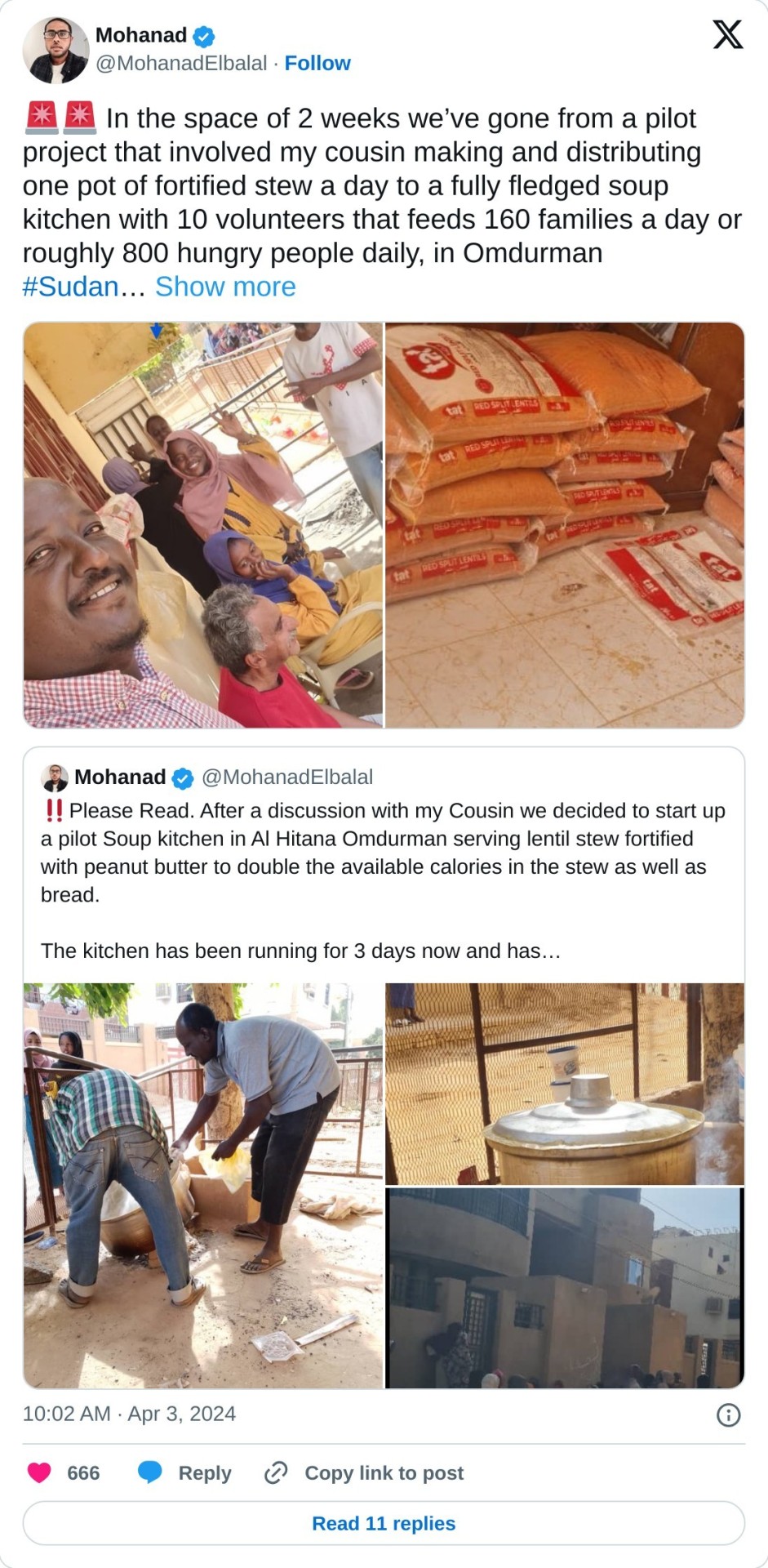
Full tweet:
🚨🚨 In the space of 2 weeks we’ve gone from a pilot project that involved my cousin making and distributing one pot of fortified stew a day to a fully fledged soup kitchen with 10 volunteers that feeds 160 families a day or roughly 800 hungry people daily, in Omdurman #Sudan
To do this we’ve cut out all possible overhead costs to ensure we can feed as many people as possible
🟢Our volunteers are unpaid
🟢Our cooking utensils are borrowed
🟢The kitchens storage rooms are donated free of charge
🟢Transport of food items from the market to the kitchen is free courtesy of my Cousin’s Tuk tuk.
🟢However, in order to maintain this kitchen beyond Ramadan we need you to support this Gofundme that is now fully funding this kitchen 🙏🏽
Id: there are two photos in the tweet. The first in the tweet are of a group of men and women. The second is of stacks of backs of lentils.
11K notes
·
View notes
Text
A Recipe for Daropaka and a Korithian Meal

Hello everyone! (More than) A few days ago I said that, as a way to celebrate reaching 200 followers that I would make one of the dishes from the setting of my WIP. I did something similar for 100 followers which you can see here. This time around I put up a poll to see what dish you all would like to see based on the favorite dishes of my OCs. You voted for Otilia's favorite food, a cheesecake (Daropaka) from the land of Korithia.
However because I felt a bit bad about how long it took me to get to this and because I needed to make something for dinner anyway, I prepared an entire Korithian meal, specifically the last dinner Otilia ate before she left her homeland.
I will give a short description and some history for each component of the meal and will also provide recipes. These recipes come specifically from the Korithian city-state of Kalmanati.
BIG POST ALERT

The diet of Korithians is highly reliant on cereals, grapes, and olives. Barley is the most commonly consumed cereal and is used in the bread of most commoners. However, Kalmanati is famed for the quality of its wheat, and particularly among the wealthy, wheat is the cereal grain of choice. Legumes (Lentils, peas, vetch, beans, etc), vegetables (Cabbage, carrots, lettuce, seaweeds, artichokes, asparagus, onions, garlic, cucumber, beets, parsnips, etc.) and fruits/nuts (pomegranate, almond, fig, pear, plum, apple, dates, chestnuts, beechnuts, walnuts, rilogabo(Kishite regalu "Sunfruit"), bokigabo (Kishite botagalu "Northern fruit), etc.) also make up a significant portion of the Korithian diet, with meat (Cattle, lamb, pig, goat, goose, duck, horned-rabbit, game) and fish typically filling a relatively minor role except for in the diets of wealthy individuals (like Otilia).
Vinegar, oil, and garlic appear in almost all Korithian dishes and are an essential aspect of the Korithian palate.
Recipes below the cut!

The components of the meal are as follows:
Daropaka: (Korithian: Daro = cheese, paka = cake)
Karunbarono: (Korithian: Karun = meat, baro = fire (barono = roasted) )
Pasrosi Diki: (Korithian: Pasrosi = fish(es), Diki = small)
Psampisa : (Korithian: Psamsa = bread, episa = flat)
Akuraros : (Korithian: Akuraros = cucumber)
Ewisasi : (Korithian: Ewisasi = olives)
Funemikiwados: (Korithian: Funemiki = hill (mountain diminutive), wados = oil/sauce)
Wumos: (Korithian: Wumos = wine)
Daropaka aka Awaxpaka aka Korithian Cheesecake
Daropaka is a popular dessert in Korithia, however its origins predate Korithia by several thousand years.
The dish originates from a race of forestfolk living on the Minosa, known as the Awaxi. The Awaxi were a tall and powerful race, some rivaling even demigods in size. Aside from their size the Awaxi were also easily identifiable by the third eye which sat on their forehead and the porcupine like quills which grew from their shoulders, sometimes called the Awaxi mantle.
The Awaxi were a primarily pastoralist civilization, living in small semi-temporary communities where they raised cattle and goats. They are credited with inventing cheese.
The first humans that the Awaxi came into contact with were the Arkodians. The Arkodians introduced the Awaxi to metallurgy, and in exchange the Arkodians were given knowledge of the cheesemaking process. This early form of cheese was called darawa (Korithian: Daro) and was typically made from cow's milk and vinegar, the resulting cheese being soft and crumbly, similar to a ricotta.
Unfortunately peace would not last. The Awaxi settled disagreements and debates often through duels, rather than through war. While quite skilled duelists, their culture had no reference for strategy in battle and lacked the proper skills to fend off the organized assault from imperialistic Arkodians. The Awaxi were eventually driven to extinction, though they still appear as monsters in Korithian myth.
The Arkodians themselves would later fall, destroyed by the Kishites, however many of their recipes, including their recipe for cheesecake, would be passed down to their descendants, the Korithians.
Recipe
(Note that Korithia has no distinct set of measurements nor are recipes recorded. Recipes are typically passed down orally and differ greatly between regions and even families. Adjust ingredients to one's own liking) (Also note that this is not like a modern cheesecake, as it utilizes a ricotta like cheese the texture will not be as smooth and it doesn't use eggs as chickens have not yet been introduced to Korithia)
The Cheese
1/2 Gallon of Whole Cow or Goats Milk
1 Pinch of Sea Salt
2 Bay leaves
2 Tablespoons of White Vinegar
1 Large Ripe Pear
6 Tablespoons Honey
2 Tablespoons White Wheat Flour
1 Tablespoon Rilogabo Juice (substitute 1:1 Orange and Lemon juice)
The Crust
1 Cup White Wheat flour
Water, Warm
1 Pinch of Sea salt
The Topping
1 Sprig Rosemary
3 tablespoon honey
2 tablespoon rilogabo juice (see above)
1 Large pear (optional)
Fill a pot with milk. Stir in salt and add bay leaves. Heat over medium heat until milk registers around 190 F, do not allow to boil. Look for slight foaming on the surface, when the temperature has been reached, remove the bay leaves and add vinegar, the curds will begin to form immediately, stir to fully incorporate vinegar without breaking curds. Stop.
Take the pot off of the heat and cover, allow it to sit for 15 minutes.
Using cheesecloth, a fine mesh strainer or both, separate the curds from the whey. Allow the curds to cool and drain off excess liquid.
Preheat the oven to 410 F or 210 C. Grease the bottom and sides of an 8 inch cake pan with olive oil.
While cheese is draining, make the crust. Knead the white wheat flour with a pinch of salt and warm water for about 15-20 minutes, until obtaining a smooth consistency. Roll a thin circular sheet larger than the cake pan. Lay the dough inside, trim off any dough which hangs over the edge of the pan.
Skin and seed 1 large pear, using either a mortar and pestle or a food processor, break the pear down into a paste or puree, there should be no large visible chunks.
Combine drained cheese, 6 tbsp honey, pear puree, flour, and rilogabo juice. Using a food processor or other implement combine ingredients until a smooth texture is achieved. Taste and add honey accordingly
Pour the mixture into the pan, careful not to exceed the height of the crust. Top with a sprig of rosemary and place into the oven.
Cook for 25-30 minutes or until the filling has set and the surface is golden.
Make the topping by combining 3 tablespoons of honey and the remaining rilogabo juice.
Remove cake from the oven and pour the topping over the surface. Allow the cake to cool
Serve warm, cold, or room temperature with fresh fruit.
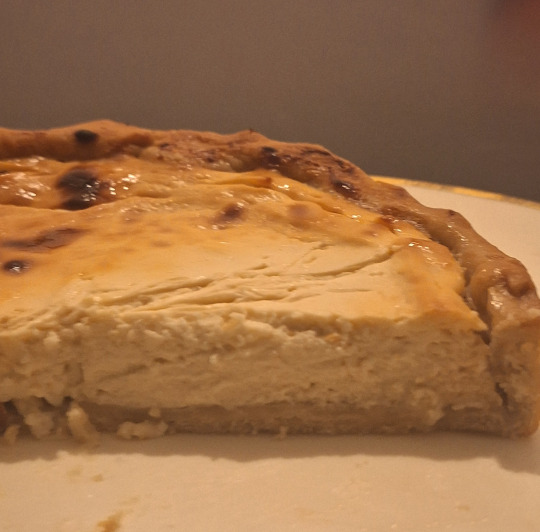
Karunbarono aka Roasted Meat
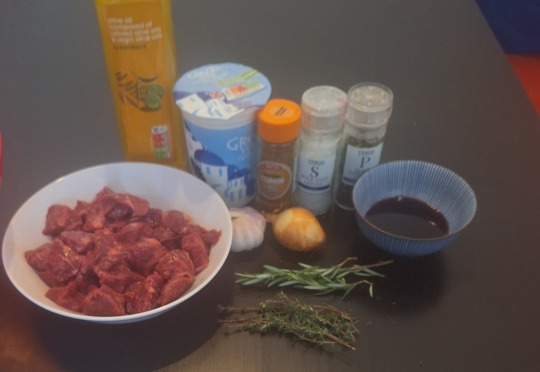
Cooking meat on skewers is a staple of Korithian cuisine, so much so that in certain regions the metal skewers or kartorosi, can be used as a form of currency. Meat is typically cooked over an open fire or on portable terracotta grills, though it is not unheard of to use a large beehive shaped oven or baros. The majority of the meat eaten by the lower classes comes in the form of small game such as rabbit or sausages made from the scraps of pork, beef, mutton, poultry, and even seafood left after the processing of more high-class cuts. The chicken has not yet been properly introduced to the islands, though some descendants of pre-Calamity chickens do exist, though they in most cases have drastically changed because of wild magic. Animals are rarely eaten young, lambs for example are almost never eaten as their potential for producing wool is too valuable. Most animals are allowed to age well past adulthood, except for in special circumstances. The practice of cooking meat in this style is prehistoric stretching back far before Korithia or Arkodai. What is newer however is the practice or marinading the meat before cooking it, this is a Korithian and later Kishite innovation.
Recipe
1 lb Mutton (meat used in this recipe), beef, lamb, venison, or horned-rabbit meat (in order to achieve this it is suggested to use wild hare meat in combination with pork fatback) chopped into bite sized pieces
4 Tablespoons Plain Greek Yogurt
4 Tablespoons Dry Red wine (Any dry red will work, for this recipe I used a Montepulciano d'abruzzo but an Agiorgitiko would work perfectly for this)
3 Tablespoons Olive Oil
4 Cloves of Garlic roughly chopped
1 Small onion roughly chopped
1 sprig fresh thyme
1 sprig fresh rosemary
1 tsp sea salt
1 tsp black pepper
1/2 tsp ground cumin
Gather and measure ingredients
Combine everything into a large bowl and stir, making sure that all pieces of meat are covered in the marinade.
Cover and allow meat to sit, preferably in the fridge for 2 hours or up to overnight.
Well the meat is marinating, if using wooden or bamboo skewers, soak in water for at least one hour to prevent burning.
Preheat the oven to 400 F or roughly 205 C. Or if cooking an open fire, allow an even coal bed to form.
Remove meat from the fridge, clean off excess marinade including any chunks of garlic or onion
Place meat tightly onto the skewers making sure that each piece is secure and will not fall off.
Brush each skewer with olive oil and additional salt and pepper to taste, optionally add a drizzle of red wine vinegar.
Place on a grate either in the oven with a pan below it to catch drippings or else over the fire. Allow to cook for 10-20 minutes depending on how well you want your meat cooked (less if using an open fire) Check every five minutes, flipping the meat after each check.
Remove from the oven and serve immediately.
Pasrosi Diki aka Little Fishes

Despite living by the sea, fish makes up a surprisingly small part of most Korithians' diet. The most valuable fish typically live far away from shore, where storms and sea monsters are a serious threat to ships. Much of the fish that is eaten are from smaller shallow water species, freshwater species, or shellfish. Tuna, swordfish, sturgeon, and ray are considered delicacies, typically reserved for the wealthy. Marine mammals such as porpoise are eaten on rare occasions, typically for ceremonial events. Pike, catfish, eel, sprats, sardines, mullet, squid, octopus, oysters, clams, and crabs are all consumed by the poorer classes. Sprats and sardines are by far the most well represented fish in the Korithian diet, typically fried or salted, or even ground and used in sauces. This particular recipe makes use of sprats. Unlike their neighbors in Baalkes and Ikopesh, Korithians rarely eat their fish raw with the exception of oysters.
Recipe
(Note that unlike modern recipes using whitebait, these are not breaded or battered as this particular cooking art has not yet been adopted in Korithia, though it is in its infancy in parts of Kishetal)
10-15 Sprats (other small fish or "whitebait" can also be used)
2 quarts of olive oil (not extra virgin)
Sea salt to taste
Black Pepper to Taste
Red Wine Vinegar to taste
Gather ingredients
Inspect fish, look for fish with clear eyes and with an inoffensive smell, avoid overly smelly or damaged fish.
Pour olive oil into a cast iron skillet or other high sided cooking vessel and heat to approximately 350 F or 177 C.
Fry the fish in batches of 5, stirring regularly to keep them from sticking. Cook for 2-4 minutes until the fish have started to crisp. Be careful, some fish may pop and spit.
Remove fish from the oil and allow them to drain.
Season fish with salt, pepper, and vinegar and serve.
Psampisa aka Flatbread
There are many varieties of bread eaten in Korithia and grain products make up anywhere from 50 to 80 percent of an average individuals diet. This particular variety of bread is most popular in the southern and eastern portions of Korithia, whereas a fluffier yeasted loaves are more commonly eaten in the west and north. This recipe is specifically made with wheat but similar breads can also be made with barley or with mixtures. If you do not want to make this bread yourself it can be substituted with most pita breads. Bread is served with every meal and some meals may feature multiple varieties of bread.
(Note for this recipe I only had self-raising flour at hand which gives a slightly puffier bread, if this is what you want add roughly 3 tsps baking powder)
Recipe
2 1/2 cups white wheat flour plus more for surface
1 1/2 teaspoons sea salt
1 cup whole fat greek yogurt
Olive oil for cooking
In a large bowl, mix together the flour, salt and baking powder. Add the yogurt and combine using a wooden spoon or hands until well incorporated
Transfer the dough to a lightly floured surface and knead by hand for 5 minutes until the dough feels smooth.
Cover the dough and allow to sit for approximately 20 minutes
Separate dough into desired number of flatbreads.
Add flour to each dough ball with your hands and then use a rolling pin to flatten out the dough on a lightly floured surface. Size is up to taste.
Heat a pan on medium high heat. Add the olive oil and cook the flatbreads one at a time for about 2-4 minutes, depending on thickness, per side until the bread is puffed and parts of it has become golden brown.
Akuraros aka Cucumber (Salad)

While the cucumber has become a relatively popular crop within Korithian agriculture it is not native and was all but unknown to their Arkodian predecessors. Cucumbers, which actually originated in Sinria and Ukar, were introduced by Kishite invaders during the Arko-Kishite war and were subsequently adopted by the survivors of that conflict. Cucumbers are associated with health and in particular with fertility. Cucumbers are typically eaten raw or pickled. They may be used in salads or even in drinks, ground into medicinal juices. Cucumbers are additionally believed to ward off disease carrying spirits and may be hung outside of the doors of sick individuals to ward off evil entities. Cucumbers are also fed to learning sages, as they are believed to strengthen the resolve and spirit. A potion consisting of the magical herbs wumopalo and lisapalo, wine, and cucumber juice has historically been used to temporarily induce in non-sages the ability to see spirits. Dill is additionally believed to produce positive effects, thought to ward of diseases of the stomach and cancers. Dill is often used in potions which may effect the physical nature of an individual, these potions are rarely used as their effects are most often permanent to some extent.
This particular cucumber salad recipe is a favorite in the region around Kalmanati, Bokith.
Recipe
1 large cucumber cleaned
2 cloves garlic roughly chopped
2 tablespoons fresh dill chopped
1/3 cup red wine vinegar
1/4 cup extra virgin olive oil
Salt to taste
Pepper to taste
Cumin to taste
Cut cucumber into thin slices (the actual width will vary dependent on taste)
Combine cucumber and all other ingredients in a non-reactive container and mix.
Cover and store the salad for at least 30 minutes and up to 12 hours.
Serve cold
Ewisasi aka Olives
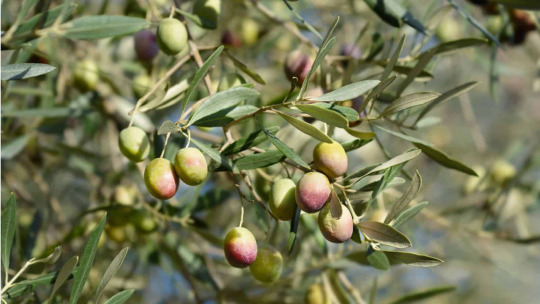
The Ewasi or olive is in many ways the center of Korithian cuisine, as it is also in Baalkes and Knosh. Olive oil is used regularly and the olive fruit is consumed at all meals of the day including dessert. Olives are cured via the use of water, vinegar, brines, or dry salt in order to remove their innate bitterness. There are hundreds of varieties of olive in Korithia alone, their taste dependent on when they are harvested, how they are cured, the particular cultivar, and even the soil in which they are grown. Kalmanati is best known for two varities of olive, the kalmi, which is red fleshed and meaty, typically cured in red wine vinegar, and the prasiki, a small green olive which is firm and slightly nutty in flavor.
Recipe
Take your favorite olives, put them in a bowl. Optionally add vinegar and herbs
Funemikiwados aka Hill Sauce
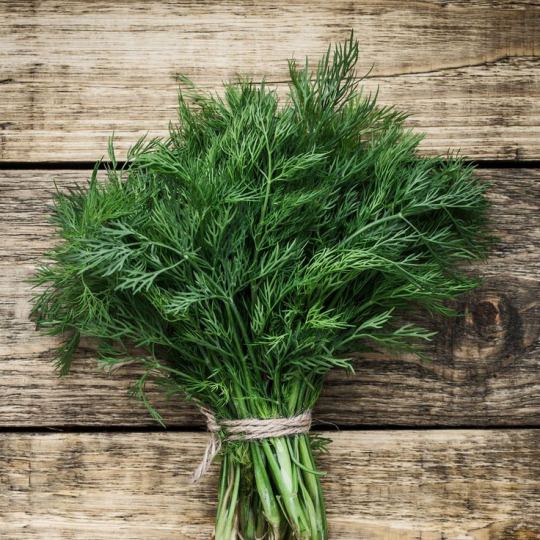
Hill sauce is the condiment of choice for most Korithian households and the exact nature of the sauce will vary greatly from region to region. In the north it is most often composed of pine nuts, olive oil, onion, vinegar, salt, and garlic. In the south the sauce is typically far more marine in nature, composed of seaweed, fish, garlic, olive oil, and vinegar. In all cases the ingredients are combined and mashed or ground to produce a pourable/dipable sauce. The sauce itself originates from the center of Korithia around the city of Bokakolis. The sauce was originally used by shepherds to flavor dried meats which may otherwise be dry or flavorless. Its name derives from the ingredients used within these early versions of the sauce, many of which were herbs plucked from the hillside while the shepherds tended to their flocks. The Kalmanatian version of the sauce is similar to this original herb based variety however it adds salt-cured fish and tisparos (Tisi - tickle, paros- seed) , another Kishite import (there it is called lisiki). This sauce is often used with practically any savory food, poured on meat, fish, vegetables, and bread. Often a house may be judged by the quality of their funemikiwados. Among the Kalmanatians there is two varieties of the sauce, a fresh version (the one described here) and another which is typically made with dried herbs and has additional vinegar added to act as a sort of preservative.
Recipe
1/2 cup extra virgin olive oil
1/3 cup red wine vinegar
2 tbsps rilogabo juice (1:1 orange and lemon)
2 anchovies (or other small salt-cured fish)
1/4 cup fresh chopped dill
1/6 cup fresh chopped parsley
1/8 cup fresh chopped thyme
6-10 leaves of fresh chopped rosemary
2-3 leaves fresh basil
2 cloves of garlic
Black pepper to taste
Ground tisparos to taste (Substitue ground sichuan pepper)
Gather the ingredients.
Combine and grind anchovies, garlic, and herbs into a fine paste, using a mortar and pestle or with a food processor.
Combine the herb paste ialong with the rest of the other ingredients and mix until completely incorporated.
Allow to sit at least 30 minutes, allowing for flavors to develop and properly incorporate with each other.
Serve with meat or fish
Wumos aka Wine
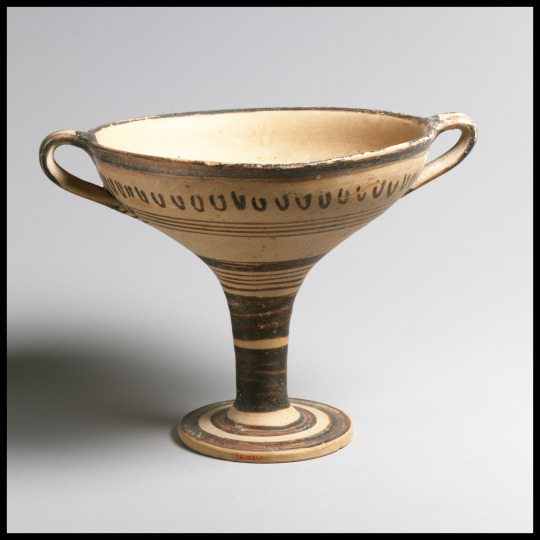
Wine in Korithia predates both the Korithians and the Arkodians, and had already been developed by several cultures on the islands including the Awaxi mentioned earlier. Wine is one of the most commonly consumed beverages, only surpassed by water, and slightly more common than psamarla, a Korithian version of unfiltered beer. Wine has many social, religious, and economic uses and is essential in the trade of the plantbrew, making up the base of many kinds of potion. There are many varieties of wine, with some being viewed as better or worse than others. Red wine is typically preferred for later in the day as it is believed that it helps to induce sleep while white wine is preferred for the morning and afternoon. Wine is typically watered down at a ratio of 2 parts water to 1 part wine, this may be either with plain or salted water. Unwatered wine is saved for special occasions and certain religious ceremonies in which intoxication is the goal. Wine may be sweetened with honey, figs, or various fruit juices. Herbs and spices such as black pepper, tisparos, coriander, saffron, thyme, and even cannabis and opium and various magical herbs may be added to change the flavor of the wine and to promote other effects.
Recipe
Pick a wine that you like and put it in a glass or cup. You can water it down if you would like but I didn't because I am not Korithian and this was a special occasion.
I finally got this post done! If you decided to read through this whole thing, thank you! Let me know if you try any of these, most of these amounts are ultimately a matter of taste, you can change things and experiment if you want.
Now we'll see if I get to 300 followers and we'll do this all over again with the food from another part of the Green Sea.
Thank you all again for following me, I've really enjoyed sharing my WIP with y'all!
@patternwelded-quill , @skyderman , @flaneurarbiter , @jclibanwrites , @alnaperera, @rhokisb, @blackblooms , @lord-nichron , @kosmic-kore , @friendlyshaped , @axl-ul , @talesfromtheunknowable , @wylanzahn , @dyrewrites , @foragedbonesblog , @kaylinalexanderbooks , @mk-writes-stuff , @roach-pizza
#fantasy food#writeblr#writing#worldbuilding#fantasy#testamentsofthegreensea#fantasy writing#world building#creative writing#story writing#200 followers#thank you guys so much!#fantasy world
84 notes
·
View notes